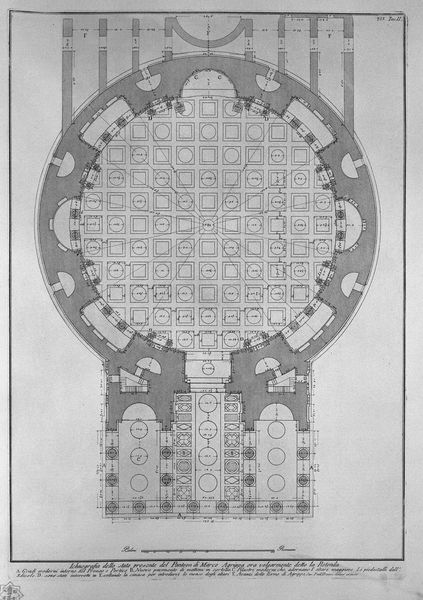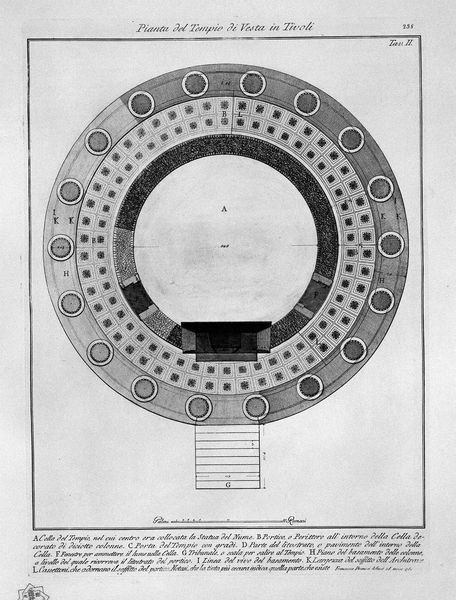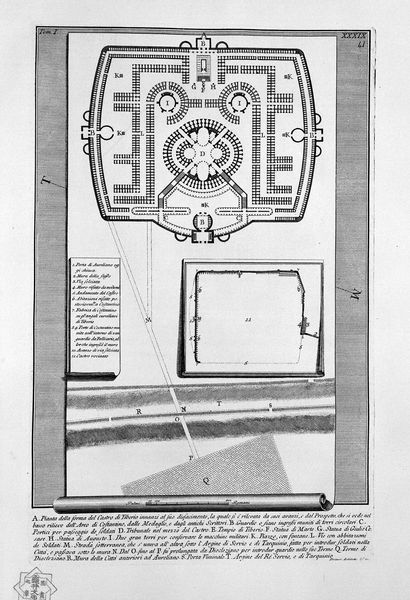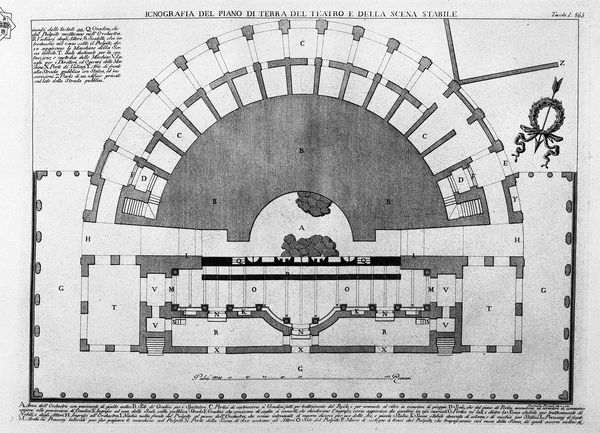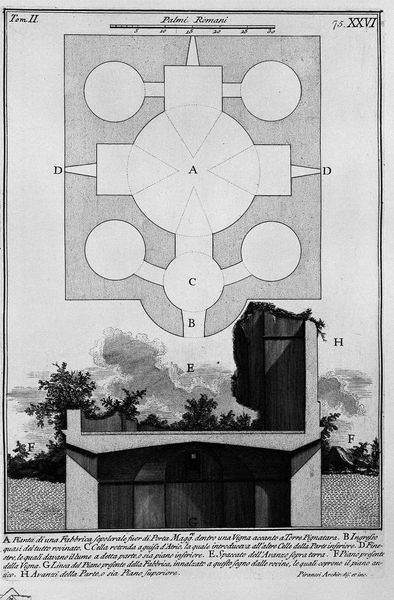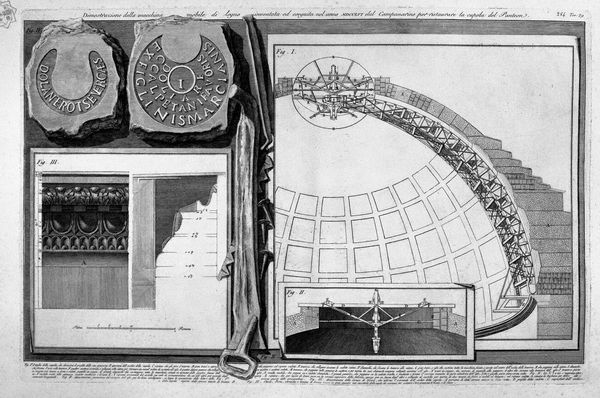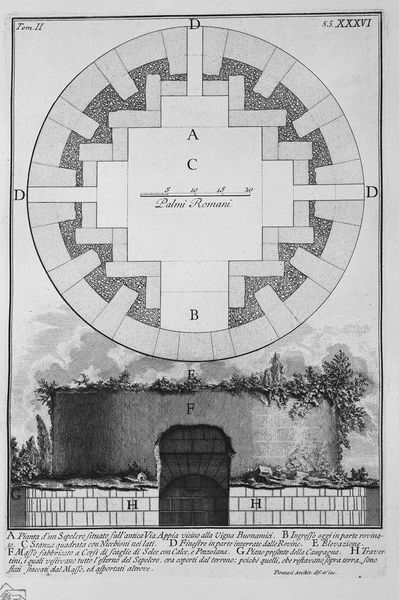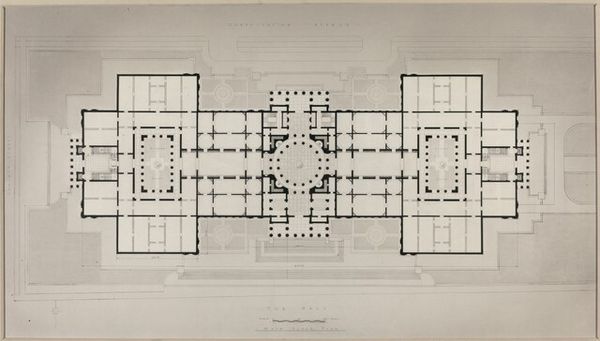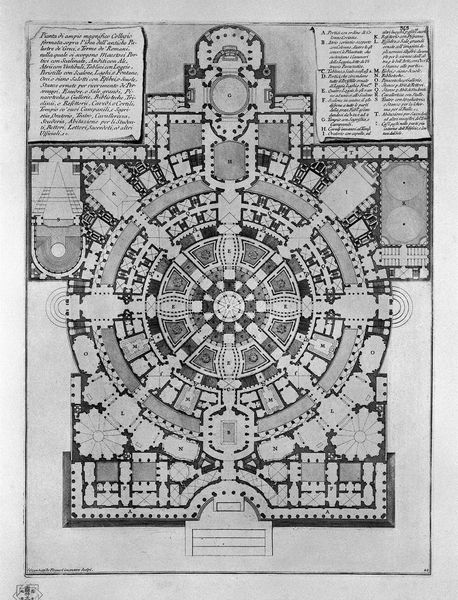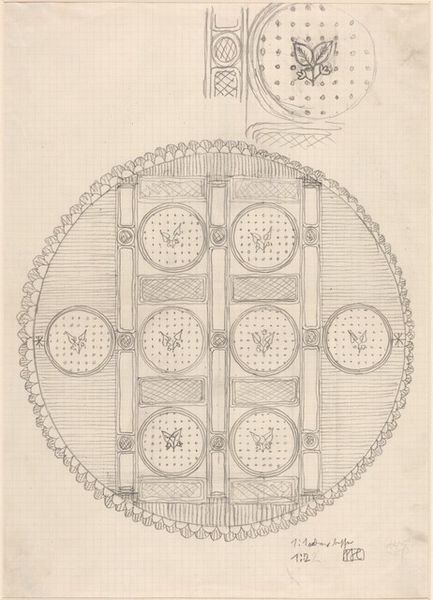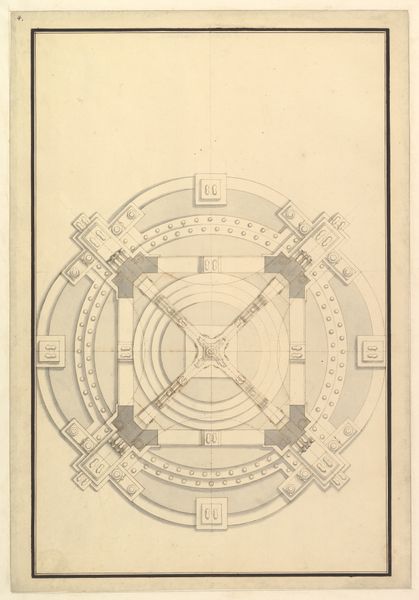
The Roman antiquities, t. 2, Plate LXI. Plan of the Mausoleum of Augustus.
0:00
0:00
drawing, print, engraving, architecture
#
drawing
# print
#
greek-and-roman-art
#
ancient-mediterranean
#
engraving
#
architecture
Copyright: Public domain
Giovanni Battista Piranesi's engraving offers us a glimpse into the plan of the Mausoleum of Augustus, a circular structure erected in ancient Rome. The circle, a symbol of eternity and cosmic unity, dominates the layout, reflecting the emperor's aspiration to divinity and everlasting fame. This motif of circular architecture resonates across history, echoing in structures like the Pantheon and even finding its way into the Renaissance Tempietto by Bramante. Such forms evoke the celestial dome, an idea that transcends cultures, appearing in Gothic rose windows and the mandalas of Eastern traditions. The circle's perpetual nature reminds us of the cyclical progression of life, death, and rebirth, mirroring the unconscious human desire for immortality. Notice how Piranesi's rendering, with its intricate detailing, evokes a powerful emotional and psychological response. The weight of history, the ambition of emperors, and the echo of eternity all converge, engaging our collective memory and subconscious. The symbol of the circle persists, continuously resurfacing, evolving, and taking on new meanings across time.
Comments
No comments
Be the first to comment and join the conversation on the ultimate creative platform.
